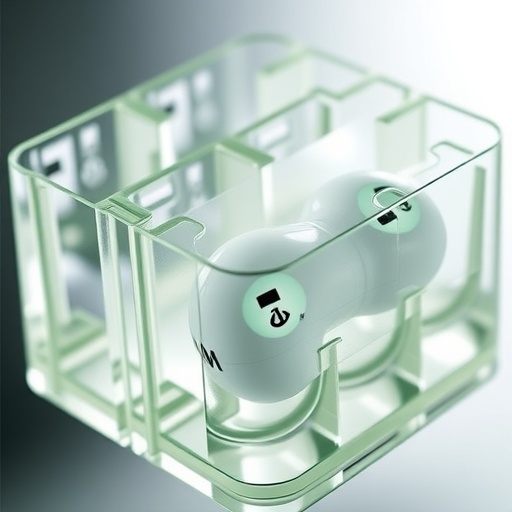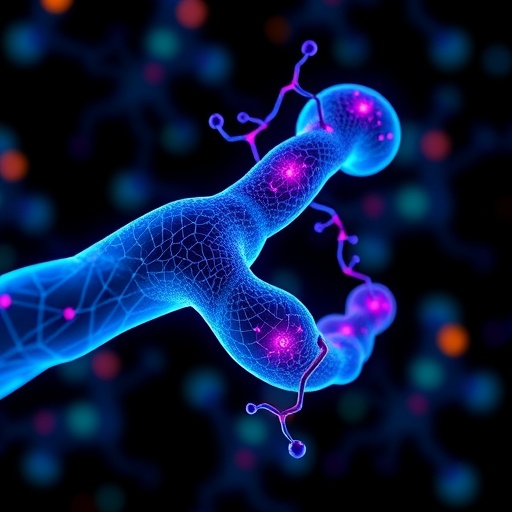Researchers have made significant strides in the field of biomaterials by utilizing hydrogels, which are three-dimensional cross-linked hydrophilic networks, offering notable characteristics such as favorable flexibility, extensive cargo loading and release capabilities, and customizable structural and functional designs. These properties make hydrogels highly sought after for a range of biomedical applications. However, the existing challenges, particularly regarding in vivo utilization, cannot be overlooked. Hydrogels often encounter issues related to swelling-induced mechanical weakness, unpredictable cargo release patterns, and complex compositional structures. These hurdles impede the practical translation of these materials into clinical settings, necessitating innovative solutions.
A promising avenue for overcoming these limitations is the hybridization of biological membranes. Inspired by the intricate structures found in biological tissues, researchers have embarked on a revolutionary approach to create hydrogels with dynamically adjustable structures and functionalities. This hybridization strategy leverages biological membranes as cross-linking agents, promoting the formation of a cross-linked network through a combination of supramolecular interactions and covalent reactions. This dual mechanism allows for enhanced stability and programmability, empowering the next generation of hydrogels to meet the diverse demands of biomedical applications effectively.
Among the groundbreaking advancements in this field are the development of two distinct types of biological membrane-hybridized hydrogels. Firstly, liposome-hybridized muscle-mimicking hydrogels have been engineered to exhibit mechanically robust swelling behaviors. These unique hydrogels take inspiration from muscular structures, offering both pliability and strength akin to live muscle tissues. This design not only improves their mechanical performance but also opens up avenues for their applications in soft tissue engineering and regenerative medicine.
Furthermore, the researchers have successfully fabricated extracellular vesicle-hybridized skin-mimicking hydrogels that boast enhanced mechanical integrity, lubricity, antibacterial properties, and immunoactivity. Mimicking the characteristics of skin, these hydrogels are engineered to retain moisture and provide a suitable barrier against infection, making them particularly relevant for wound healing applications. By employing biological membranes, the researchers have innovatively circumvented some of the traditional pitfalls commonly associated with hydrogel development.
The preparation processes for these hybridized hydrogels are methodically outlined. The fabrication of muscle-mimicking hydrogels requires an estimated duration of three days, excluding the initial synthesis of reactive group-functionalized biological membranes. In contrast, the skin-mimicking hydrogels can be constructed in approximately one day, illustrating a clear distinction in the complexity and time investment required for different hydrogel types. The straightforward nature of this hybridization strategy presents an attractive preparative platform for researchers seeking viable solutions to develop tunable hydrogels.
A key advantage of this hybridization method lies in its flexibility and ease of modification, incorporating a secondary network that further augments the structure and functionality of the biomimetic hydrogels. This adaptability positions the membranes as versatile cross-linking agents that can cater to various biomedical purposes by adjusting their properties through intelligent design. By allowing the integration of diverse biological functionalities, the scope of potential applications is markedly expanded.
Interestingly, the protocol for constructing these hydrogels demands an arsenal of expertise covering various areas including polymer modification, hydrogel preparation techniques, manipulation of nanoscale vesicles, surface functionalization, and principles surrounding cell culture. This diversity in required knowledge illustrates the multidisciplinary nature of modern biomaterials research, underscoring the importance of collaboration across scientific fields.
Characterization of the resulting hydrogels is another critical aspect of this innovative work. Extensive characterization ensures that the hydrogels maintain their intended properties and functions. Researchers employ a range of analytical techniques, including mechanical testing, microscopy, and biological assays, to assess the performance of the hydrogels, verifying their mechanical strength, responsiveness to stimuli, and biological compatibility. Through diligent characterization, researchers can fine-tune the hydrogels and optimize their performance for specific applications, leading to improved outcomes in clinical or therapeutic settings.
As experts continue to explore the extensive possibilities offered by hybridized hydrogels, it becomes increasingly clear that they represent a breakthrough in the development of biomaterials. The simplicity of the biological membrane hybridization strategy not only advances our understanding of hydrogel technology but also leads to real-world applications that could transform the future of medicine. The implications of these findings are profound, paving the way for novel treatments and solutions that can enhance patient care and healing outcomes.
The integration of biological membranes in hydrogel synthesis could also catalyze new research opportunities. Scientists are now poised to investigate other forms of hybridization, perhaps introducing additional layers of complexity and functionality to hydrogels. For example, combining different types of biomolecules or synthetic polymers may lead to innovations that are even more structurally diverse and functionally versatile, further enhancing the performance of hydrogels in biomedical applications.
This duality of structure and function is essential for addressing specific needs in the biomedical field. The ability to create hydrogels that can actively respond to environmental changes, such as pH, temperature, or biochemical stimuli, positions them as dynamic tools in drug delivery systems, tissue engineering scaffolds, and wound healing therapies. By harnessing this responsiveness, hydrogels can be designed to release therapeutics in a controlled manner, adapting to the particular requirements of the target tissues and ensuring more efficient treatment.
Indeed, the implications of these advancements extend well beyond traditional applications of hydrogels. As researchers continue to delve deeper into the underlying mechanisms of biological membrane hybridization, they may uncover additional functionalities that could further revolutionize the design of hydrogels, such as enhanced biosensing capabilities or localized therapeutic effects. Such innovations could potentially usher in a new era of smart biomaterials capable of intricate interactions with biological systems.
In conclusion, the work surrounding the hybridization of biological membranes in hydrogel fabrication has the potential to realize innovative solutions in the biomedical landscape. By overcoming inherent limitations of traditional hydrogels and introducing a method that combines versatility with functionality, researchers stand at the frontier of what is possible in tissue engineering, regenerative medicine, and beyond. The future holds exciting prospects, as we continue witnessing the evolution of hydrogels through this pioneering research avenue.
Subject of Research: Hydrogels and their applications in biomedical fields.
Article Title: Generating structurally and functionally programmable hydrogels by biological membrane hybridization.
Article References:
Wu, F., Chen, H., Liu, J. et al. Generating structurally and functionally programmable hydrogels by biological membrane hybridization.
Nat Protoc (2025). https://doi.org/10.1038/s41596-025-01247-4
Image Credits: AI Generated
DOI: 10.1038/s41596-025-01247-4
Keywords: Hydrogels, biomaterials, biological membranes, tissue engineering, drug delivery, regenerative medicine, hybridization strategy.
Tags: advancements in hybrid membrane technologybiological membrane hybridization techniquesbiomaterials research innovationschallenges in hydrogel utilizationcovalent cross-linking in biomaterialscustomizable hydrogel structural designsflexibility and cargo release in hydrogelshybrid hydrogels for biomedical applicationsin vivo hydrogel performance issuesnext-generation hydrogel applicationsprogrammable hydrogel developmentsupramolecular interactions in hydrogels





